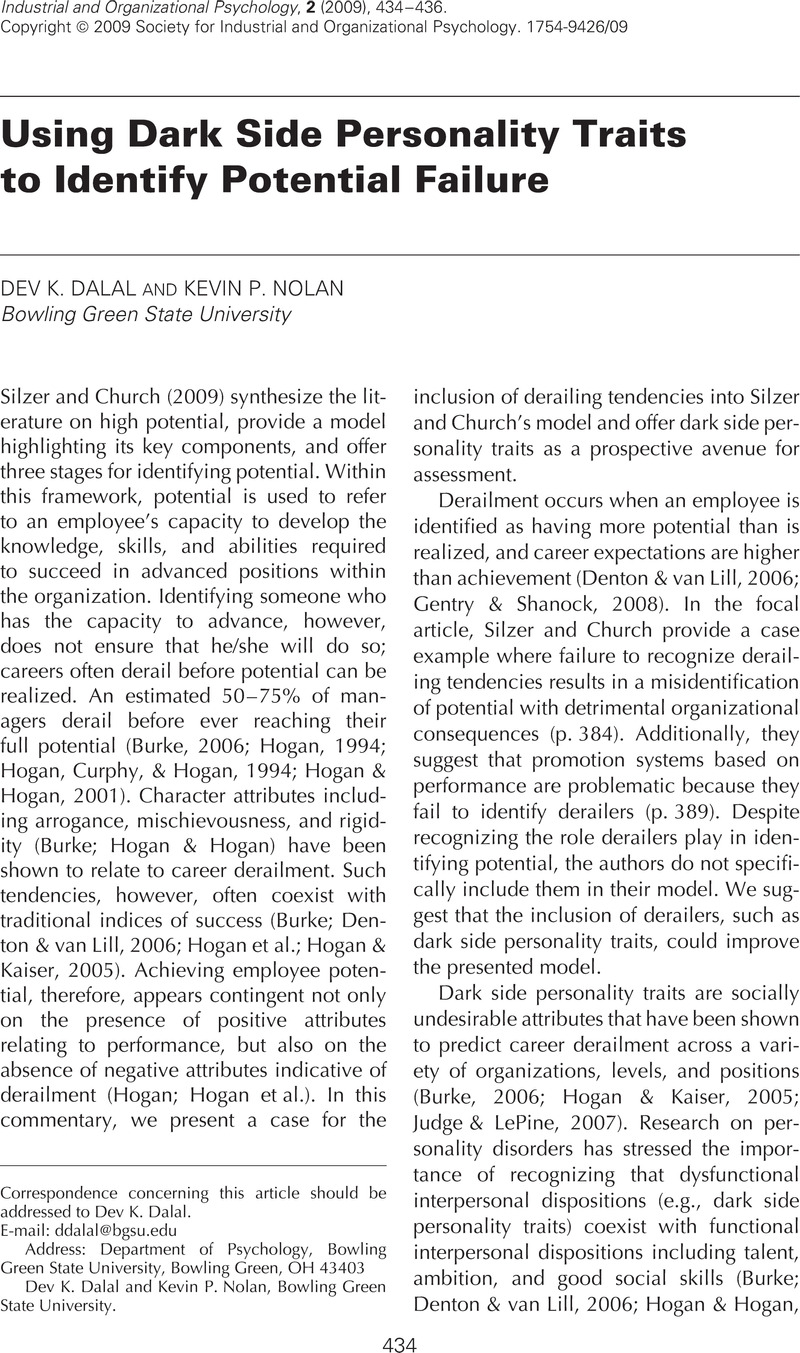Crossref Citations
This article has been cited by the following publications. This list is generated based on data provided by Crossref.
Silzer, Rob
and
Church, Allan H.
2009.
The Potential for Potential.
Industrial and Organizational Psychology,
Vol. 2,
Issue. 4,
p.
446.
McPhail, S. Morton
and
Jeanneret, P. Richard
2012.
The Oxford Handbook of Personnel Assessment and Selection.
p.
411.
Jackson, Duncan J. R.
2014.
Can Maladaptive Personality Be Assessed in Organizations?.
Industrial and Organizational Psychology,
Vol. 7,
Issue. 1,
p.
110.
Winkler, Brigitte
Dörr, Stefan
and
Klebl, Ulfried
2017.
Auswahl und Onboarding von Führungspersönlichkeiten.
p.
49.
Andersen, Torben
and
Raalskov, Jesper
2019.
Managing Talent.
p.
149.
Swailes, Stephen
2020.
Responsible talent management: towards guiding principles.
Journal of Organizational Effectiveness: People and Performance,
Vol. 7,
Issue. 2,
p.
221.
Bouland-van Dam, Sophie I. M.
Oostrom, Janneke K.
De Kock, François S.
Schlechter, Anton F.
and
Jansen, Paul G. W.
2021.
Unravelling leadership potential: conceptual and measurement issues.
European Journal of Work and Organizational Psychology,
Vol. 30,
Issue. 2,
p.
206.



